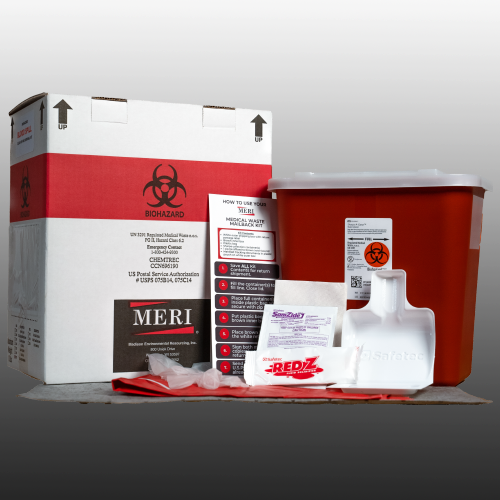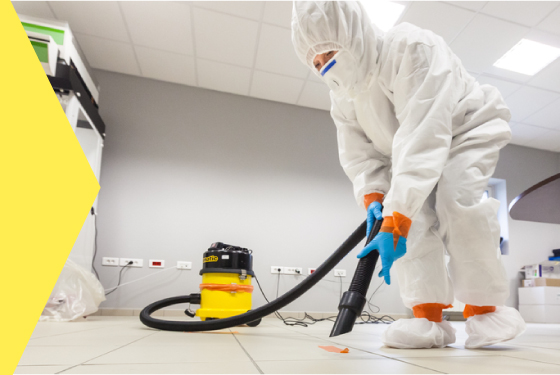Exact ATP Testing for Effective Cleanliness and Hygiene Surveillance
Exact ATP Testing for Effective Cleanliness and Hygiene Surveillance
Blog Article
Professional Biohazard Cleaning and Decontamination for Blood, Bodily Fluids, and Hazardous Products
The prospective wellness dangers connected with direct exposure to biohazards emphasize the vital demand for meticulous handling and detailed cleaning. As we browse the elaborate landscape of biohazard cleanup, recognizing the nuances of policies, compliance, and the specific tools at play comes to be vital in making sure a complete and safe purification process.
Health Threats of Biohazard Exposure
Exposure to biohazards presents significant health and wellness dangers that can result in extreme repercussions for neighborhoods and people alike. Biohazards incorporate a vast range of biological compounds, consisting of blood, physical liquids, mold and mildew, germs, viruses, and various other possibly contagious materials. When individuals come into contact with these biohazards, whether through accidents, improper handling, or ecological direct exposure, they encounter the risk of contracting severe health problems or illness.
One of the key wellness risks connected with biohazard direct exposure is the transmission of infectious diseases. Bloodborne virus such as HIV, hepatitis B and C, and different germs can be present in biohazardous materials, posing a direct threat to human health and wellness. Inhaling air-borne biohazards like mold spores or entering contact with infected surface areas can additionally result in respiratory system issues, allergies, and various other unfavorable wellness effects.
Moreover, biohazard direct exposure can have long-term health and wellness effects, with some diseases materializing years after the first get in touch with (Blood Cleanup). For that reason, it is vital to focus on appropriate biohazard cleaning and purification to mitigate these health risks and make sure the safety of people and neighborhoods

Specialized Training for Biohazard Cleanup
When it pertains to dealing with biohazard clean-up effectively and securely, specialized training plays an essential role in making sure correct purification procedures are followed. Biohazard cleaning requires particular knowledge and skills to properly reduce risks related to bloodborne microorganisms, bodily fluids, and unsafe products. Specialists trained in biohazard cleanup undertake strenuous instruction on exactly how to securely take care of, remove, and take care of biohazardous materials to stop contamination and exposure.
Specialized training for biohazard clean-up covers a variety of crucial topics, including proper individual safety devices (PPE) usage, bloodborne pathogen understanding, decontamination methods, and contaminated materials disposal procedures. People educated in biohazard clean-up are equipped with the essential expertise to analyze contamination levels, determine possible risks, and carry out appropriate clean-up treatments in compliance with regulatory criteria.
Continual training and education and learning are extremely important in the area of biohazard cleanup to stay upgraded on the most up to date decontamination modern technologies, security methods, and policies. By purchasing specialized training, biohazard cleanup professionals can efficiently react to emergency situation clean-up circumstances and secure both public health and wellness and the setting.
Significance of Proper Purification Methods
Using appropriate decontamination techniques is crucial in biohazard clean-up to effectively eliminate unsafe products and decrease health and wellness threats. Efficient purification not just makes sure the removal of noticeable traces of blood, bodily liquids, and various other biohazards but additionally targets unnoticeable virus that may posture significant wellness hazards if not properly removed. By complying with rigid purification protocols, educated professionals can substantially minimize the risk of direct exposure to dangerous bacteria, infections, and bacteria that could bring about infections or illness.
Appropriate decontamination techniques involve using customized equipment and disinfectants that are especially developed to counteract biohazards properly. Extensive cleansing and sanitation of infected locations are necessary to protect against the spread of virus and ensure a risk-free environment for occupants. In addition, the correct disposal of biohazardous waste complying with decontamination treatments is important additional hints in stopping contamination of various other surface areas or people.

Equipment and Devices for Safe Clean-up
When dealing with blood, bodily liquids, or harmful products, biohazard cleaning professionals rely on specialized equipment to reduce exposure dangers and extensively sanitize the afflicted location. Additionally, biohazard cleaning kits consisting of disinfectants, absorptive materials, and biohazard bags are used to securely include and dispose of polluted items.
Advanced cleaning tools like hospital-grade disinfectants, HEPA-filtered vacuum cleaners, and misting devices are used to sanitize surface areas and eliminate biohazards efficiently. Specialized equipment such as sharps containers and biohazard garbage disposal bins are utilized to safely handle sharp objects and biohazardous waste products. By utilizing the ideal equipment and tools, biohazard cleaning specialists can make sure a comprehensive cleaning procedure that focuses on safety and security and reduces health threats for both workers and occupants of the affected space.
Regulations and Conformity in Biohazard Cleaning
Appropriate adherence to laws and conformity requirements is critical in biohazard cleansing to make sure the security of both personnel and the atmosphere. Government agencies such as OSHA (Occupational Security and Health And Wellness Management) and the EPA (Environmental Security Agency) have actually developed details standards for biohazard cleaning treatments to reduce health dangers and environmental contamination. These regulations cover a series of elements consisting of the handling, transportation, and disposal of biohazardous materials, along with the essential training and safety equipment needed for employees involved in the cleaning procedure.
Biohazard cleansing companies should remain current with these policies to ensure that their operations fulfill the called for security requirements. Failure to follow these policies can result in severe consequences, including fines, lawsuit, and endangering the health and wellness of individuals and the environment. By complying with rigid policies and compliance procedures, biohazard cleansing firms can efficiently alleviate risks and this contact form make certain a comprehensive and risk-free cleanup process for all events involved.
Conclusion
Finally, biohazard cleaning and decontamination require specialized training, appropriate techniques, and adherence to policies. Direct exposure to blood, bodily fluids, and harmful products postures substantial health dangers, making it crucial to utilize the ideal tools and tools for risk-free cleaning. By adhering to stringent procedures and standards, specialists can successfully alleviate the threats connected with biohazard direct exposure and ensure the safety and security of both themselves and others.
As we browse the detailed landscape of biohazard cleanup, understanding the subtleties of regulations, conformity, and the customized tools at play becomes essential in making sure a complete and safe decontamination process. (Blood Cleanup)
When it comes to dealing with biohazard cleanup successfully and securely, specialized training plays a basic duty in ensuring correct purification procedures are followed.Utilizing correct decontamination methods is crucial in biohazard clean-up to successfully remove dangerous products and reduce health threats. In addition, biohazard cleansing packages containing anti-bacterials, absorptive materials, and biohazard bags are used to safely contain and dispose of infected items.
Federal government recommended you read firms such as OSHA (Occupational Security and Wellness Administration) and the EPA (Environmental Security Agency) have actually established specific guidelines for biohazard clean-up treatments to decrease wellness dangers and ecological contamination.
Report this page